Please be advised that the information contained in this article is no longer accurate following rule changes that were introduced April 1, 2020.
Hello, it is I, Redshift. It has been a while since I actually wrote an in-depth article that wasn’t just a weekly/set ruling post. I considered writing one about the card Lose 1 Turn, just because it seems there are more people in the world that own Ultra Rare Giant Hands than understand how that card’s effects work (based on personal experience). Jokes aside, I believe my previous article on effect negation proved to be quite helpful to many people, and I can only hope this article does the same.
By now, anyone paying attention to the world of rulings in Yu-Gi-Oh! in the past few years will have heard about the idea that Trigger Effects need to be in a certain place in order to activate. This makes sense, because obviously if an effect activates on the field, it should be on the field (at least to activate), right? Well, there’s more to it than that, and I’m going to try and cover the mechanic as best I can. Regardless of which version of the game you play, this article may have some important information for you.
The majority of the information provided here comes from an assortment of rulings for both the TCG and OCG, including my own personal correspondences with Konami. That said, if you live in United States or Canada, please begin with Part V before proceeding.
PART I. The basic idea.
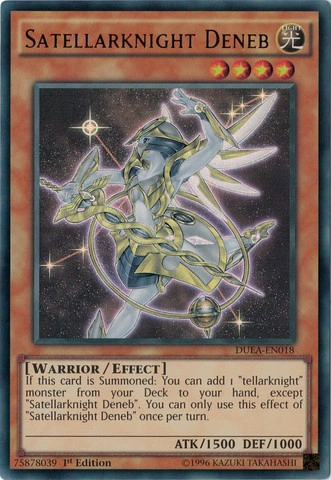
Let’s use the most often cited example. Suppose you have a Set Call of the Haunted, and a Satellarknight Deneb in your Graveyard. Your opponent activates Mystical Space Typhoon, targeting your Call of the Haunted. You then decide to chain that Call of the Haunted, targeting Satellarknight Deneb. Now, we resolve the chain. Call of the Haunted Special Summons Satellarknight Deneb, and then Mystical Space Typhoon destroys Call of the Haunted. Call of the Haunted immediately destroys Satellarknight Deneb in the process. Now we begin a new chain, where we can activate the effect of Satellarknight Deneb (due to her wonderful “if” wording, Deneb’s effect cannot miss its chance to activate, as opposed to a monster like Green Gadget). But we see that Deneb has already been destroyed, and isn’t on the field anymore. Can we even activate her effect?
Yes, that is possible. Even though Satellarknight Deneb is no longer on the field, you are able to activate her effect. But what about some other examples? Now let’s say, instead of Mystical Space Typhoon, the turn player is using the effect of Madolche Queen Tiaramisu, and after having selected 2 target “Madolche” cards in the Graveyard, you chain that Call of the Haunted in an effort to get your Deneb’s effect. What happens now? Your Call will resolve of course, but let’s say that your opponent then chooses to shuffle your Deneb into the Deck with the effect of Tiaramisu. Given our first example, Deneb should still be able to activate once this chain resolves. But actually, Deneb’s effect cannot activate this time. What changed? Instead of destroying Deneb and putting her in your Graveyard, we returned her to the Deck where she is no longer visible. This means she is not “public knowledge” anymore, and her effect is unable to activate as a result. In the first example, Deneb was placed in the Graveyard during the chain, keeping her effect public.
The mechanic is laid out for us with these examples. If the monster (or card) is public knowledge when it is time to activate its triggered effect, said effect can be activated even if it is not in the location it normally needs to be. What is a public knowledge location? For the purposes of this article, cards that are face-up on the field, in the Graveyard, banished face-up, or face-up in the Extra Deck are good to go. Cards that end up in the hand, Main Deck, or Extra Deck (face-down), or are face-down on the field or banished face-down, are not.
Keep in mind as well, it does not matter whether an effect is mandatory or not, at least for now. (More on that later.)
A few more quick examples:
● Mermail Abysspike is Normal Summoned and activates its effect by discarding Atlantean Dragoons. The effect of D.D. Crow is chained, banishing Atlantean Dragoons. After the effect of Mermail Abysspike resolves, the effect of Atlantean Dragoons can and will activate because it is currently banished face-up.
● Mermail Abyssturge is Normal Summoned and activates its effect by discarding Atlantean Marksman, then targets that same Atlantean Marksman. When resolving the effect, Atlantean Marksman is added back to the hand. After the chain resolves, the effect of Atlantean Marksman does not activate because it is in the hand, and not visible to both players.
● Malefic Paradox Dragon is Synchro Summoned while Malefic World is NOT on the field. The Continuous Effect of Malefic Paradox Dragon destroys it immediately, but the Trigger Effect it has can still be activated. (You could even target that same Malefic Paradox Dragon in your Graveyard.)
PART II. Changing card type.
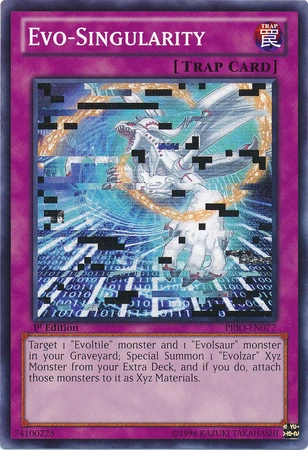
The idea of public knowledge vs. non-public knowledge is simple enough. But it doesn’t cover everything. There are scenarios in which a card’s type can be changed after its trigger has been met, but before it has a chance to activate. What does that mean? Well, this may be news to some people, but every card in the game is either a Monster, Spell, or Trap Card. That’s basically what I mean when I say card type. For the purposes of this article, Xyz Material is also our fourth card type. Separate from the location mechanic, changing card type is important because it will prevent you from activating your effects just as if the card changed to a non-public location.
Example 1. Suppose we declare an attack with D/D/D Wave Oblivion King Caesar Ragnarok, and activate its effect targeting another “D/D” or “Dark Contract” card, while the opponent has Shaddoll Dragon and Performage Damage Juggler on the field. The opponent chains El Shaddoll Fusion, Fusion Summoning El Shaddoll Construct when it resolves. Now we return the target of Caesar Ragnarok’s effect to the hand, and choose El Shaddoll Construct as our monster to equip to it. El Shaddoll Construct would normally be able to activate in a new chain, and we see that it is still public knowledge (it is a face-up Equip Spell Card.) However, its card type has changed from a Monster Card to a Spell Card, and it can no longer activate its monster effect as a result. Neat.
Going further. Evoltile Najasho is Tributed to activate Ultra Evolution Pill. You activate your own Evo-Singularity in a chain, targeting that Evoltile Najasho and another monster. When Evo-Singularity resolves, Evolzar Laggia is Special Summoned and Evoltile Najasho is attached to it as an Xyz Material. After Ultra Evolution Pill resolves, the effect of Evoltile Najasho cannot activate in a new chain because it is now an Xyz Material, not a Monster Card.
One last example. The effect of Superheavy Samurai Thief is activated, destroying a Deskbot 006 in your opponent’s Pendulum Zone. Afterward, you decide to apply the part of Thief’s effect that allows you to place the destroyed card in your own Pendulum Zone. The effect of Deskbot 006 is a monster effect that activates in the Extra Deck, but at this time it is back to being a Spell Card in the Pendulum Zone. Can your opponent activate its effect now? No, they cannot.
PART III. Monsters affecting themselves.
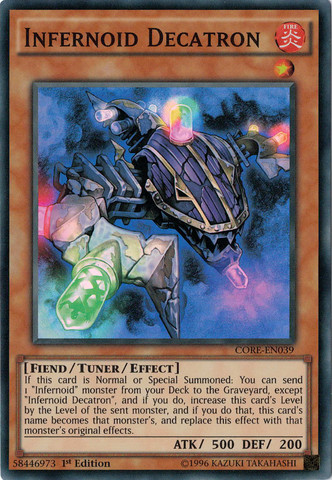
Suppose you have a Set Call of the Haunted, and an Infernoid Decatron in your Graveyard. Your opponent activates Mystical Space Typhoon, targeting your Call of the Haunted. You then decide to chain that Call of the Haunted, targeting Infernoid Decatron. Now, we resolve the chain. Call of the Haunted Special Summons Infernoid Decatron, and then Mystical Space Typhoon destroys Call of the Haunted. Call of the Haunted immediately destroys Infernoid Decatron in the process. This scenario is almost identical to our initial Deneb example, only this time we are Special Summoning Decatron instead. Looking at their wording, there seems to be no reason why the result would be any different. If Deneb is able to activate in a new chain, surely the effect of Infernoid Decatron can as well, since it too is still public knowledge and incapable of missing its chance to activate if Special Summoned in a higher Chain Link. But you can’t! This is because Decatron’s effect includes changing its own name and effects on the field into something else. Since Decatron is no longer on the field, you would now be trying to activate an effect that cannot properly resolve. Think of it like trying to activate Dark Hole when there are no monsters on the field.
But wait, Decatron’s text states that you first send an “Infernoid” monster to the Graveyard, and if you do, its name and effects change. Why can’t you just send an “Infernoid” monster to the Graveyard? Well, this would certainly occur if a card like Raigeki Break was chained to Decatron’s successful effect activation, but in our scenario above, Decatron is off the field before its effect even activates, and we can already determine that you will not be able to fully resolve the effect. This is comparable to trying to activate the searching effect of Ritual Beast Ulti-Cannahawk while Mistake is on the field compared to having Mistake chained to the effect of Ritual Beast Ulti-Cannahawk. (In the first scenario, you simply cannot activate the effect, and in the second, you have already done so and you resolve as much as you can.)
Incidentally, it does actually matter if the effect is mandatory or not. Decatron has an optional effect, so you are not allowed to activate it in this scenario. If we’re dealing with mandatory effects, their effects still activate, but only as long as we abide by the previous rules (public knowledge and preserved card type).
Just a quick example of this. You attack with Junk Synchron and your opponent responds with Mirror Force. You then chain Urgent Tuning, and Synchro Summon Junk Warrior in Attack Position, but when Mirror Force resolves, Junk Warrior is destroyed. Now in a new chain, the effect of Junk Warrior activates, despite only affecting its own ATK on the field, because it is mandatory.
PART IV. Miscellaneous rulings and exceptions.
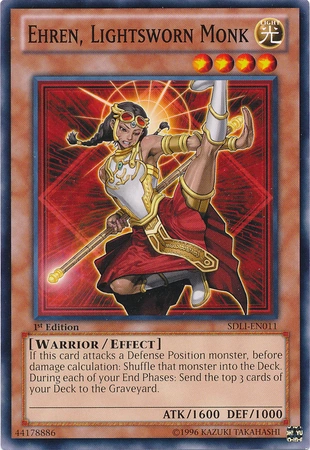
The above sections cover the basics, but there are some oddball exceptions or details to be aware of. I discussed that effects do not always need to be where they meet their activation requirements in order to activate, but in general they still need to be there when their trigger is met.
The best example I can think of is World of Prophecy. His first effect allows you to add 2 targeted “Spellbook” Spell Cards in your Graveyard to your hand. After that effect resolves, you can activate a separate Trigger Effect which destroys all other cards on the field. Suppose you Special Summon World of Prophecy and activate his first effect, but then your opponent chains Raigeki Break and destroys him. Naturally, that first effect will resolve normally. But what about his second effect? If World is in the Graveyard now, he’s public knowledge. But that doesn’t mean you can activate his effect, because he was not face-up on the field to “see” that you added the Spellbooks to your hand.
And of course, as elegant as these rules may be, there are exceptions. If you were to attack a face-down Night Assailant with Ehren, Lightsworn Monk or Drillroid, the effect of the attacking monster would spin it back to the Deck or destroy it before damage calculation. Normally, the Trigger Effects of Flip monsters activate after damage calculation. If we follow the rules of public knowledge, Drillroid should not prevent the effect of Night Assailant from activating, but Ehren should. Plot twist: Neither of them do. This is just the way the Damage Step is set up. We can only make assumptions as to why.
Another thing to be aware of is that in any examples covered previously in this article, even if the card is not where it met its activation requirements but subsequently activates, the effect is still treated as being activated where it is “supposed to”. In the Deneb example, Deneb’s effect is activating on the field, so you cannot chain Debunk to it. In the Ehren example above, the effect of Night Assailant is activating on the field and may still be negated by Shadow-Imprisoning Mirror.
PART V. The great debate.
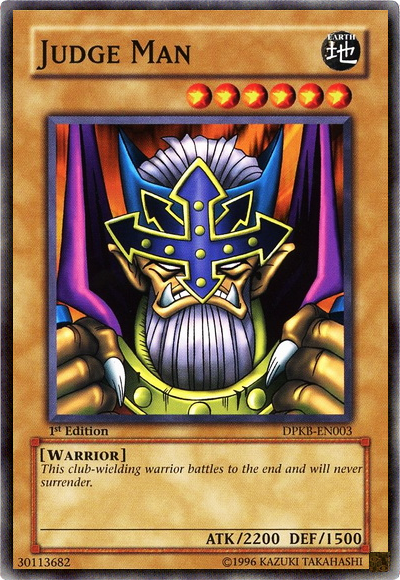
Many of you might have read this and thought, “Wait, none of this is true.” You are thinking of how this mechanic is dealt with in many large events that occur in United States or Canada. (Well I did tell you to skip to this section first.) Unfortunately, due to limitations in how rulings are handled there, those that cover this topic are different than the rest of the world’s, and this isn’t likely to change any time soon. However, our judges do an excellent job at keeping rulings consistent from event to event, and in general with their work. So if you do plan on participating in any North American event soon, or any environment that adopts their practices, you can ignore the majority of this article because the result in almost every example I gave will be that you cannot activate your effect. But if you play the OCG or TCG anywhere else, you get to enjoy this mechanic. (Having access to subscription and manga promos isn’t everything, you know.)
As a fun fact, there are actually cards in the game that prove the “public knowledge” principle by their text alone. Goblin Fan is my favorite example. Goblin Fan has an interesting destruction effect that does not start a chain; it destroys a monster immediately after being Flip Summoned, and before any effect could activate in response to the Flip Summon (such as a Flip monster’s effect). It also states, “Its effects do not activate at this time.” One may ask why that line would need to be there if the public knowledge principle is not true; if cards always have to be where they trigger in order to activate, why would that clause be necessary at all? In conclusion, that clause is there to prevent the activation of an effect that would logically otherwise activate.
It’s good to be aware of these cards, so that you can make informed calls if you happen to be judging an event in the future and someone is using Mystical Space Typhoon on a Set Call of the Haunted.
PART VI. Conclusion.
This is the end.
